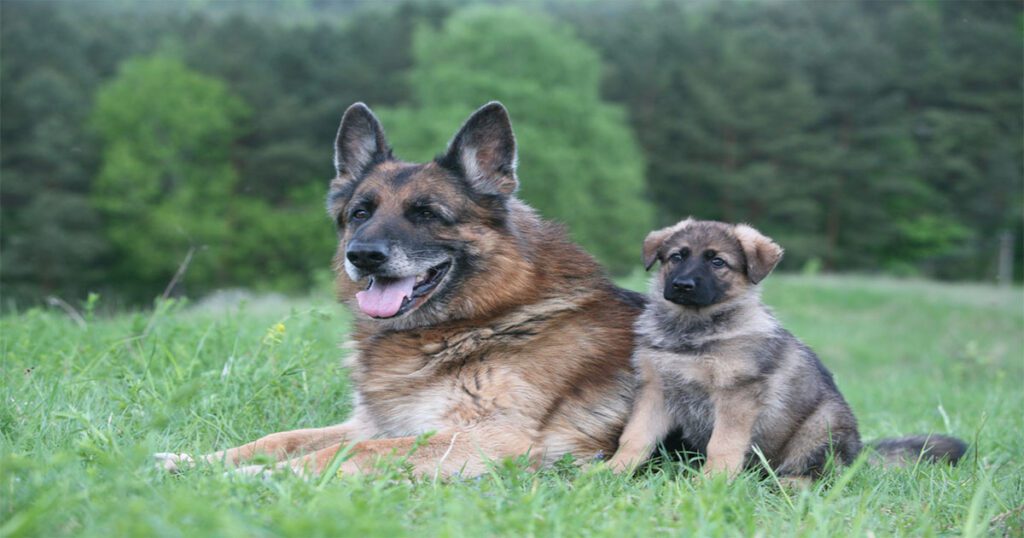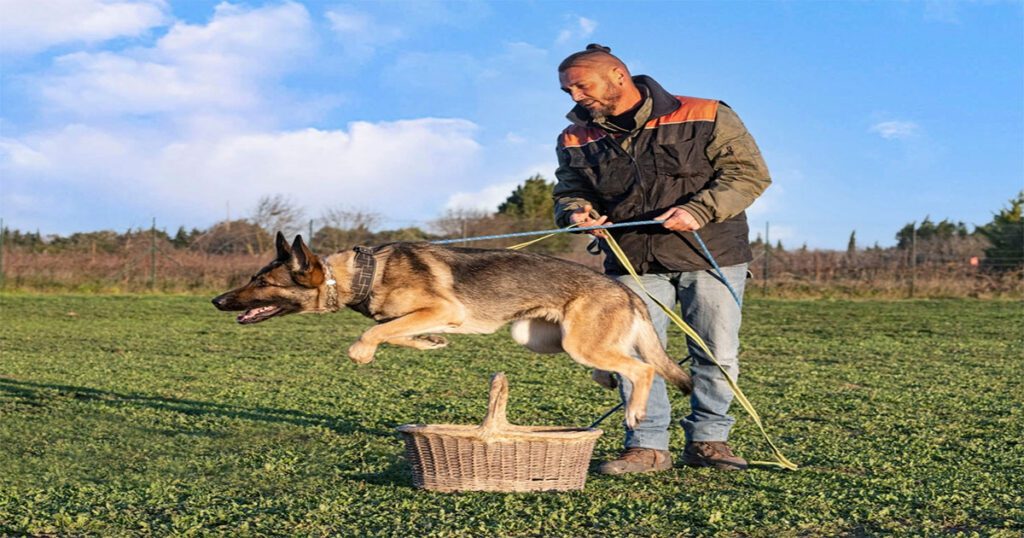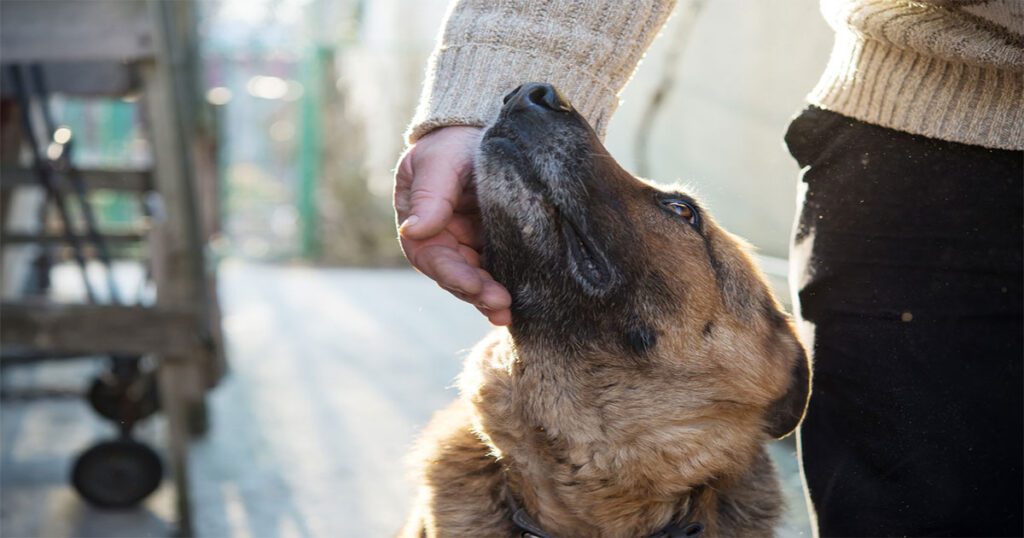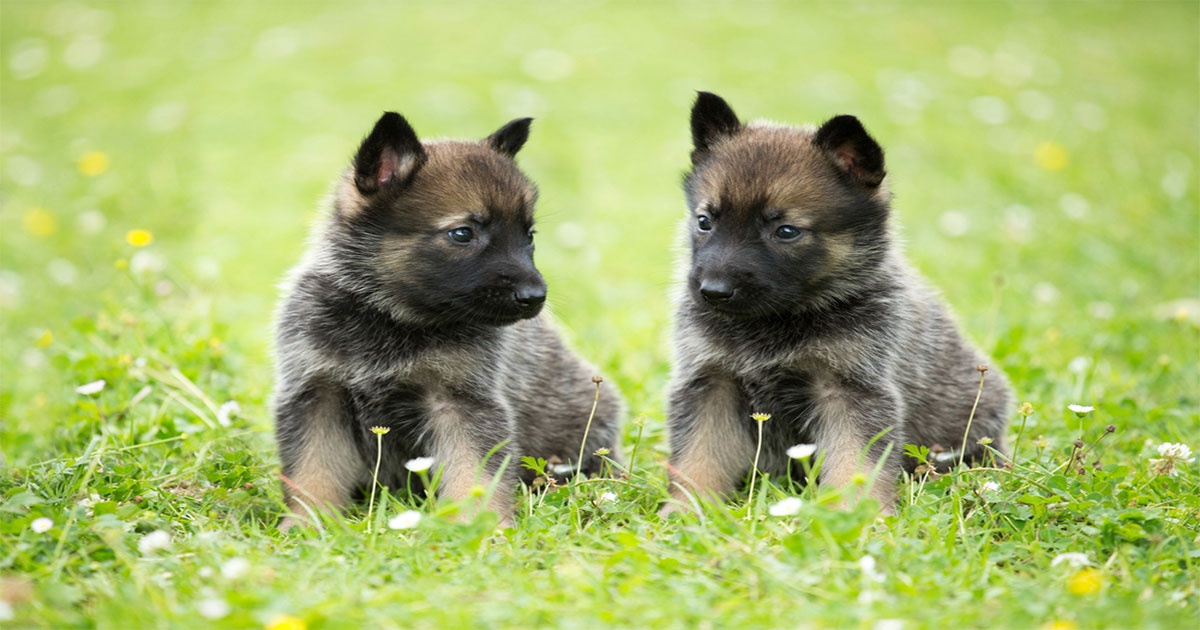If you’re considering adding a new member to your family, Grey German Shepherd puppies are an excellent choice. Welcoming a new furry friend into your home is an exciting and fulfilling experience.
These intelligent and loyal canines are not only stunning in appearance but also possess remarkable qualities that make them exceptional companions.
In this comprehensive guide, we’ll explore everything you need to know about Grey German Shepherd puppies, from their unique characteristics to training tips and care recommendations.
Table of Contents
Grey German Shepherd Puppies – Overview
Grey German Shepherd puppies are a distinct variation of the German Shepherd breed known for their striking coat color.
While the classic German Shepherd is known for its black and tan coat, the Grey German Shepherd stands out with a beautiful blend of grey shades, ranging from light silver to charcoal.
This unique coloring, combined with their exceptional temperament, makes Grey German Shepherds a sought-after choice among dog enthusiasts.
Characteristics of Grey German Shepherd Puppies
Grey German Shepherd puppies are a captivating breed that possesses a distinct set of physical attributes, coat color variations, and temperament traits. Let’s delve into what makes these puppies so unique and irresistible.
Physical Appearance and Unique Features
Grey German Shepherd puppies are strikingly beautiful, with regal and elegant stature. They typically exhibit a well-balanced body structure, showcasing their agility and strength. Their muscular build and confident stance are a testament to their impressive lineage.
Physical Features of Grey German Shepherd Puppies:

Physical Appearance
| Physical Feature | Description |
| Body Structure | Well-balanced, muscular, and agile |
| Size | Medium to large-sized breed |
| Ears | Erect, triangular-shaped, and alert |
| Eyes | Dark and expressive, conveying intelligence |
| Tail | Long, bushy, and held low at rest |
| Coat | Double coat with dense, straight, and weather-resistant fur |
Coat Color Variations and Genetics
The enchanting grey coat color of German Shepherd puppies is a result of intricate genetic factors. These pups can exhibit various shades of grey, ranging from lighter hues to darker tones.
Understanding the genetics behind this coat color variation adds to the allure of grey German Shepherds.
Grey Coat Color Genetics in German Shepherds:
| Coat Color | Genetic Factors |
| Sable Grey | Inheritance of the sable gene combined with the grey gene |
| Solid Grey | Presence of the recessive grey gene |
| Bi-color Grey | Combination of the grey gene with other color patterns |
| Patterned Grey | Various patterns like brindle or merle combined with grey |
Temperament and Personality Traits
Grey German Shepherd puppies are known for their intelligent, loyal, and protective nature. These remarkable pups display a remarkable balance of traits, making them excellent companions, working dogs, and family pets.
Temperament Traits of Grey German Shepherd Puppies:
| Temperament Trait | Description |
| Intelligence | Highly intelligent and quick to learn |
| Loyalty | Devoted and fiercely loyal to their family |
| Trainability | Eager to please and responsive to training |
| Protective Nature | An instinct to protect their loved ones |
| Confidence | Self-assured and composed in various situations |
- Intelligent and Trainable: Grey German Shepherds are highly intelligent dogs, which makes them quick learners. Their intelligence makes training sessions enjoyable and productive, allowing you to teach them various commands and tricks with ease.
- Loyal and Protective: Known for their unwavering loyalty, Grey German Shepherds are fiercely protective of their families. They form strong bonds with their owners and will go to great lengths to ensure their loved ones’ safety.
- Agile and Athletic: Grey German Shepherds are athletic dogs with a strong build. They excel in various physical activities and make fantastic partners for outdoor adventures, such as hiking, running, or playing fetch.
- Striking Coat Color: The most distinguishing feature of Grey German Shepherd puppies is their stunning coat color. Their grey hues create a unique and eye-catching appearance that sets them apart from other German Shepherds.
- Medium to Large Size: Grey German Shepherds typically fall into the medium to large size category. As adults, they can reach a height of 22-26 inches (55-65 cm) at the shoulder and weigh between 60-90 pounds (27-41 kg), depending on their gender and genetics.
These characteristics make grey German Shepherd puppies an ideal choice for individuals and families seeking a loving, intelligent, and dependable canine companion.
Care and Grooming Tips – Grey German Shepherd Puppies
Feeding and Nutrition
Providing a balanced and nutritious diet is crucial for the overall health and well-being of your Grey German Shepherd puppy. Here are some essential feeding and nutrition tips:
- High-Quality Dog Food: Opt for premium-quality dog food that is specifically formulated for large breed puppies. Look for options that contain high-quality proteins, essential vitamins, and minerals for optimal growth and development.
- Portion Control: Grey German Shepherd puppies have specific dietary requirements, so it’s important to feed them appropriate portion sizes. Follow the feeding guidelines provided on the dog food packaging and adjust as needed based on your puppy’s age, weight, and activity level.
- Scheduled Meals: Establish a regular feeding schedule for your Grey German Shepherd puppy. Divide their daily food intake into multiple meals to promote healthy digestion and prevent overeating.
- Fresh Water: Always ensure that your puppy has access to clean and fresh water throughout the day. Hydration is vital for their overall health and well-being.
Exercise and Mental Stimulation
Grey German Shepherd puppies are active and intelligent dogs that require regular exercise and mental stimulation. Here’s how to keep them happy and healthy:
- Daily Walks: Take your Grey German Shepherd puppy for daily walks to provide them with physical exercise and mental stimulation. Aim for at least 30 minutes to an hour of exercise each day.
- Interactive Toys: Provide your puppy with interactive toys that engage their minds and keep them entertained. Puzzle toys, treat-dispensing toys, and chew toys are excellent options.
- Training Sessions: Grey German Shepherds thrive on mental challenges, so incorporating training sessions into their daily routine is essential. Teach them basic obedience commands, such as sit, stay, and come, and gradually progress to more advanced training as they grow.
- Socialization: Expose your Grey German Shepherd puppies to various environments, people, and other animals from an early age. This helps them develop into well-rounded and confident dogs.
Grooming and Coat Care
Maintaining the coat of your Grey German Shepherd puppy is essential to keep them looking their best. Here are some grooming tips to follow:
- Brushing: Grey German Shepherds have a medium-length double coat that requires regular brushing. Use a slicker brush or a grooming mitt to remove loose hair and prevent matting. Aim for weekly brushing sessions to keep their coat healthy and shiny.
- Bathing: Bathe your puppy when necessary using a gentle dog shampoo. Avoid frequent bathing, as it can strip their coat of natural oils. Additionally, ensure that you dry them thoroughly after each bath to prevent skin issues.
- Nail Trimming: Regularly trim your Grey German Shepherd’s puppies nails to prevent overgrowth and discomfort. If you’re not familiar with nail trimming, consult a professional groomer or your veterinarian for guidance.
- Dental Care: Brush your puppy’s teeth regularly to maintain good oral hygiene. Introduce toothbrushing gradually using dog-friendly toothpaste and toothbrush.
Training and Development
Training and development are essential aspects of raising your grey German Shepherd puppy. By employing effective training techniques, understanding their developmental stages, and fostering a strong bond, you can set the stage for a fulfilling and lifelong companionship.
Let’s dive into these key elements.
Basic Training Techniques
When it comes to training your grey German Shepherd puppy, it’s crucial to start with the basics. These foundational training techniques will lay the groundwork for a well-behaved and obedient companion:
- Positive Reinforcement: Reward your puppy with treats, praise, and affection for desired behaviors. This approach creates a positive association and motivates them to repeat those behaviors.
- Clicker Training: Utilize a clicker to mark desired behaviors and reinforce positive actions. By associating the click sound with rewards, you can effectively communicate and shape their behavior.
- Crate Training: Introduce your puppy to a crate as a safe and comfortable space. Gradually acclimate them to it, making it a peaceful haven for rest.
- Leash Training: Teach your puppy to walk politely on a leash without pulling or tugging. Use gentle guidance and positive reinforcement to encourage good leash manners.
- Housebreaking: Establish a consistent routine for bathroom breaks and teach your puppy appropriate elimination habits. Positive reinforcement will help them understand where and when to relieve themselves.

Training and Development
Stages of Development and Milestones
As your grey German Shepherd puppy grows, they go through various stages of development. Understanding these stages and the milestones they reach along the way will allow you to tailor your training approach and expectations:
- Neonatal Stage: In this initial stage, puppies are completely dependent on their mother for nourishment and care. They are blind and deaf, and spend most of their time sleeping and nursing.
- Transitional Stage: Puppies start to open their eyes, hear sounds, and explore their environment. They become more aware of their surroundings and begin to develop basic motor skills.
- Socialization Stage: This critical period involves learning and socializing with littermates, humans, and other animals. Puppies develop bite inhibition, begin to understand social cues and form bonds.
- Juvenile Stage: At this stage, your puppy experiences a surge in energy and curiosity. They start teething, refining coordination, and engaging in more exploratory behaviors.
- Adolescent Stage: Hormonal changes occur during this stage, leading to increased independence and testing of boundaries. Consistent training and guidance are crucial during this transitional period.
- Adult Stage: Your grey German Shepherd puppies reaches physical and mental maturity, solidifying the training foundations established in earlier stages. They become reliable, well-rounded adult dogs.
Building a Strong Bond and Fostering a Positive Relationship
Developing a strong bond with your grey German Shepherd puppy is a vital aspect of their upbringing. Here are some tips to foster a positive relationship:
- Quality Time: Spend dedicated, quality time with your puppy. Engage in play sessions, go for walks, and partake in activities that strengthen the bond between you both.
- Effective Communication: Communicate your expectations using positive reinforcement. Reward desired behaviors and redirect or correct unwanted behaviors gently and consistently.
- Patience and Consistency: Training and building a bond takes time and patience. Stay consistent in your approach, reinforce positive behaviors, and be patient with your puppy’s learning process.
- Socialization: Expose your puppy to a variety of people, animals, and environments to develop their social skills. Positive experiences will help them grow into well-adjusted and confident dogs.
By implementing these training techniques, understanding the stages of development, and fostering a strong bond, you’ll be well on your way to raising a happy, well-behaved, and cherished grey German Shepherd puppies companion.
Finding a Reputable Breeder
The breeder you select will play a significant role in the health, temperament, and overall well-being of your future furry companion. Let’s explore the importance of finding a reputable breeder and some key tips to help you in your search.
The Importance of Choosing a Reputable Breeder
Selecting a reputable breeder ensures that you are welcoming a grey German Shepherd puppy into your home with confidence and peace of mind. Responsible breeders prioritize the health and welfare of their dogs, adhering to ethical breeding practices.
Tips on Researching and Identifying Responsible Breeders
- Seek Recommendations: Reach out to trusted sources such as local German Shepherd clubs, veterinarians, or other reputable dog owners for recommendations on reliable breeders.
- Conduct Background Checks: Research breeders online and check for any red flags or negative reviews. Look for breeders who have a solid reputation, positive testimonials, and a commitment to their dogs’ welfare.
- Visit Local Dog Shows or Events: Attend dog shows or events in your area where you can meet and interact with reputable breeders. This provides an opportunity to observe their dogs’ temperament, physical condition, and overall care.
Questions to Ask Breeders and Things to Look for When Visiting Their Facilities
When interacting with potential breeders, asking the right questions and observing their facilities can provide valuable insights. Here are some key inquiries and observations to consider:
Questions to Ask Breeders and Things to Observe
| Questions to Ask Breeders | Observations to Make |
| Can I meet the puppy’s parents? | Observe the behavior and health of the parents |
| Do you conduct health screenings and genetic testing? | Look for evidence of health testing and results |
| How do you socialize and raise your puppies? | Assess the puppies’ temperament and social skills |
| Can I see the living conditions of the dogs? | Ensure clean and safe facilities for the dogs |
| What kind of support do you provide to puppy buyers? | Gauge their commitment to ongoing support and care |
Grey German Shepherd Puppies Rescue and Adoption
While finding a reputable breeder is one option, it’s also essential to consider the possibility of adopting a grey German Shepherd puppy from a rescue organization.
Rescue and adoption can be rewarding and compassionate choices. Let’s explore the benefits of adopting and the steps involved.
Exploring the Option of Adoption
Adopting a grey German Shepherd puppy offers a chance to provide a loving home and a fresh start to a puppy in need.
By choosing adoption, you become a part of the solution, helping to reduce the number of dogs in shelters and giving a second chance to a deserving companion.

Grey German Shepherd Puppies Rescue and Adoption
The Benefits of Adoption and Giving a Second Chance
Adopting a grey German Shepherd puppy brings numerous benefits to both the puppy and you as the adopter. Some advantages include:
- Saving a Life: By adopting, you offer a new lease on life to a puppy that may have faced uncertain circumstances.
- Pre-Adoption Evaluation: Rescue organizations often conduct thorough evaluations, allowing you to gain insights into the puppy’s personality, compatibility, and any specific needs they may have.
- Fulfillment and Gratitude: The bond formed with an adopted puppy is incredibly special. Witnessing their transformation and knowing you played a role in their journey brings immense fulfillment and gratitude.
Resources and Steps to Take When Considering Adoption
When considering adoption, there are steps to follow and resources available to guide you through the process:
- Research Local Rescue Organizations: Explore reputable rescue organizations that specialize in German Shepherds or have a specific focus on grey German Shepherd puppies.
- Complete Adoption Applications: Fill out adoption applications, providing necessary information about your lifestyle, home environment, and preferences.
- Meet and Interact: Arrange visits with the rescue organization to meet potential adoptable puppies. Spend time getting to know them, observing their behavior, and assessing their compatibility with your family.
- Adoption Fees and Process: Understand the adoption fees and the process involved, including any necessary paperwork and home checks.
Remember, whether you choose a reputable breeder or opt for adoption, the well-being and happiness of your grey German Shepherd puppy should always be the top priority.
Frequently Asked Questions
Q: How much exercise do Grey German Shepherd puppies need?
Ans: Grey German Shepherd puppies are active dogs and require regular exercise to stay healthy and happy. Aim for at least 30 minutes to an hour of physical activity every day.
Q: Are Grey German Shepherds good with children?
Ans: Yes, Grey German Shepherds are known to be excellent companions for children. They are naturally protective and form strong bonds with their families, including children.
Q: Do Grey German Shepherd puppies shed a lot?
Ans: Yes, Grey German Shepherds are moderate to heavy shedders. Regular brushing helps minimize shedding and keeps their coat healthy.
Q: Are Grey German Shepherds suitable for first-time dog owners?
Ans: While Grey German Shepherds are intelligent and trainable, they may not be the best choice for first-time dog owners due to their high energy levels and need for consistent training and socialization.
Q: Can Grey German Shepherds live in apartments?
Ans: Grey German Shepherds are active dogs that require ample space to move around. While they can adapt to apartment living if provided with sufficient exercise, a house with a fenced yard is more suitable for their needs.
Q: How can I find a reputable breeder for Grey German Shepherd puppies?
Ans: When searching for a breeder, look for those who prioritize the health and well-being of their dogs. Request health clearances and ask for references from previous puppy buyers. It’s crucial to choose a responsible breeder to ensure you’re getting a healthy and well-socialized puppy.
Conclusion
Grey German Shepherd puppies are remarkable companions, combining striking appearances with intelligence, loyalty, and protectiveness. With proper care, training, and socialization, these dogs can become beloved members of your family.
Remember to provide them with a balanced diet, regular exercise, and mental stimulation to ensure their overall well-being.
If you’re ready to welcome a Grey German Shepherd puppy into your home, take the time to find a reputable breeder who prioritizes the health and welfare of their dogs.
Get ready to embark on an incredible journey with your new furry friend! Good luck!

I’m David, an expert contributor and writer, with two furry friends of my own, I know the challenges of raising and caring for dogs. From training to nutrition and health, my goal is to provide valuable insights and advice to help create strong bonds and happy, healthy lives. Find me in Twitter.




